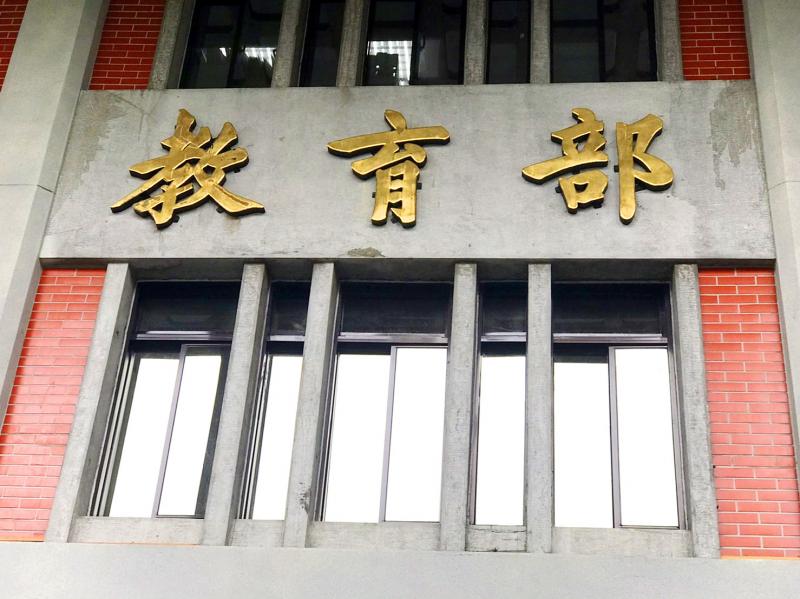Academic-launched business ventures could be a new direction for the nation’s industrial development, as over the past four years, 103 academic teams have raised more than NT$5.3 billion (US$182.97 million) and founded 22 companies through the “TRUST-U” program, the Ministry of Science and Technology said on Saturday.
While Ministry of Economic Affairs data show the average five-year survival rate of start-ups is about 57 percent, and even fewer turn a profit, Chen Ping-hei (陳炳煇), a professor of engineering at National Taiwan University, said that one type of company founder offers more promising results.
Fewer than 100 people over the past two to three decades have left academia in Taiwan to start their own companies, but of those, 10 founded firms that are now listed and worth hundreds of billions of New Taiwan dollars, including five valued at more than NT$10 billion, Chen said.

Photo: Rachel Lin, Taipei Times
For example, eMemory Technology — which is worth NT$42 billion — was founded by Charles Hsu (徐清祥), who was chairman of National Tsing Hua University’s Institute of Electronics Engineering before leaving to start his firm, Chen said.
“Scholastic entrepreneurship should be the model for the next stage of Taiwanese industry,” said Chen, who used to help run the TRUST-U program.
Over the past four years, 103 teams working on 125 projects have received NT$3.55 billion in government funding to help them turn their research into viable enterprises, and 22 companies have been launched as a result, Chen said.
Those 22 start-ups have been able to raise NT$5.3 billion, far more than the average NT$60 million in technical transfer revenue that each university receives annually, which proves the viability of investing in start-ups from academia, he said.
One such venture, NeoPower Technologies, is a green energy management technology firm founded by professors from National Taiwan Normal University (Shida) and National Formosa University, including Hung Yi-hsuan (洪翊軒), chairman of Shida’s undergraduate program of vehicle and energy engineering.
Hung said that he recognized the trend toward scholastic entrepreneurship and decided to draw upon his experience working with industry leaders while at the Industrial Technology Research Institute.
He received funding from the Ministry of Education to hire doctoral candidates, saving a significant amount on initial costs and allowing his start-up to develop products quickly, Hung said.
Many of those students joined the company full-time after receiving their doctorates, he added.
However, not all start-ups go smoothly, as Sean Chen (陳學仕), a professor of materials science and engineering at Shida, can attest.
After researching quantum materials for two decades, Chen founded HsinLight in 2018 to respond to needs in the display panel industry.
In the beginning, he did both research and marketing, but found it to be difficult and less effective than receiving grants for research papers, he said, adding that he was still determined to transform his research into a direct contribution to the industry.
To help start-ups develop, the government should provide a one-to-one subsidy, Chen said.
Academics have also said that patent fees are another challenge facing their start-ups.
Such enterprises largely owe their success to their proprietary patents, but Ministry of Education statistics show the number of university-held patents has been dropping due to increasing renewal fees, falling from NT$1.24 billion in the 2016 academic year to NT$1.02 billion in 2018.
Additional reporting by Rachel Lin

Honor guards are to stop performing changing of the guard ceremonies around a statue of Chiang Kai-shek (蔣介石) to avoid “worshiping authoritarianism,” the Ministry of Culture said yesterday. The fate of the bronze statue has long been the subject of fierce and polarizing debate in Taiwan, which has transformed from an autocracy under Chiang into one of Asia’s most vibrant democracies. The changing of the guard each hour at the Chiang Kai-shek Memorial Hall in Taipei is a major tourist attraction, but starting from 9am on Monday, the ceremony is to be moved outdoors to Democracy Boulevard, outside the eponymous blue-and-white memorial

The Chinese Nationalist Party (KMT) supports peaceful unification with China, and President William Lai (賴清德) is “a bit naive” for being a “practical worker for Taiwanese independence,” former president Ma Ying-jeou (馬英九) said in an interview published yesterday. Asked about whether the KMT is on the same page as the Democratic Progressive Party (DPP) and the Taiwan People’s Party (TPP) on the issue of Taiwanese independence or unification with China, Ma told the Malaysian Chinese-language newspaper Sin Chew Daily that they are not. While the KMT supports peaceful unification and is against unification by force, the DPP opposes unification as such and

The annual Taipei Summer Festival, which starts today, is to tone down its fireworks displays, the Taipei Department of Information and Tourism said on Monday. Fireworks displays are to be held at the riverside site in Datong District’s (大同) Dadaocheng (大稻埕) area on four days at this year’s festival, with the first today, and then on Wednesday next week, July 31 and Aug. 10, the department said. There were eight displays last year, with the reduction aimed at minimizing inconvenience to local residents, it said. The first three shows, which are all on Wednesdays, are to last for five minutes, while the final

EYE ON MAYORS: The DPP would file a complaint with the Control Yuan against Ko and Chiang over their handling of reports of abuse at a preschool in the city The Taipei City Government’s belated response under Mayor Chiang Wan-an (蔣萬安) and his predecessor, Taiwan People’s Party Chairman Ko Wen-je (柯文哲), to alleged child sex abuse at a kindergarten resulted in more children being victimized, two Taipei City Councilors said yesterday. A Taipei preschool teacher has been charged with sexually abusing six children from 2021 to last year at a school registered to his mother. Prosecutors are reportedly considering additional charges amid a wave of new accusations allegedly linking the suspect to 20 other abused children and the discovery at his residence of more than 600 sexually explicit videos featuring minors. The